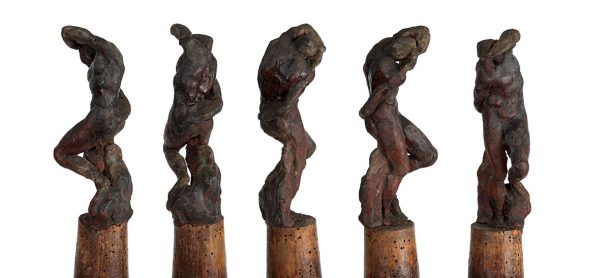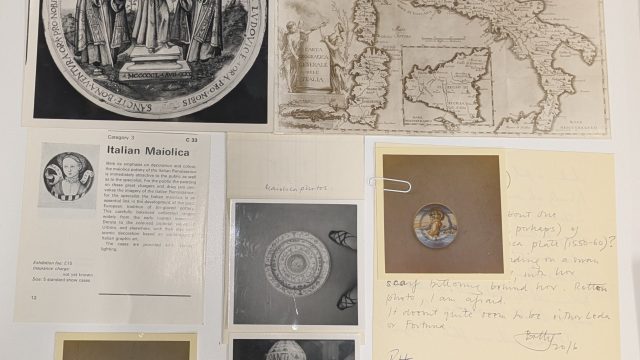This post was written with Sarah VanSnick (Lead Preventative Conservator) and Emily Long (Preventative Conservation and Data Scientist)
Every year, temperature-sensitive materials in museums are at risk of damage due to hot weather. Some objects, such as the V&A’s Michelangelo wax model, are already removed from display during the summer months – but climate change predictions warn of higher temperatures, as well as more extreme weather events and an increased risk of flooding. In future, there may be a greater number of objects at risk and sensitive objects could spend less time on display. The V&A must evaluate the current environment of the museum to prepare a strategy for future climate scenarios.

The V&A has recently published an ambitious sustainability plan, which includes an action to ‘adapt our buildings so they are fit for future climate scenarios, safeguarding appropriate environments for people and objects.’ A future climate scenario with greater extremes may mean more energy and investment is required to provide a safe environment for the collections. To help the museum plan for a significant reduction in the organisation’s carbon footprint while keeping objects safely on display, the first step is to understand the environmental performance of the building and how it may change in the future.
Providing a suitable climate for the display, storage and transport of objects is an everyday concern for the Preventive Conservation and Estate teams at the V&A. The museum has an environmental monitoring system (EMS) to understand the climate across its buildings and the risk posed to objects. The EMS collects temperature, relative humidity, and light data throughout the museum estate. The EMS works in tandem with the building management system (BMS), which is used to manage the spaces with heating and air conditioning to both provide comfort for visitors and safety for objects. As shown here, the environmental data collected from EMS can be used to visualise and summarise the temperatures throughout the South Kensington site.

The weather outside generally affects the internal environment of the V&A, so we need to understand the future risks due to climate change. The Met Office provides UK climate projection data (UKCP) as ‘the most up-to-date assessment of how the UK climate may change in the future.’ The climate projections predict that summers will be up to 41% drier and up to 3.3°C warmer. Winters are also predicted to be up to 2.4°C warmer and 22% wetter. Extreme climate events are predicted to be more common, including more heavy summer rainfall events that extend further into autumn. Hot spells, where temperatures are greater than 30°C for two or more consecutive days, are expected to rise from less than one spell per year to over four spells per year by 2070. The impact of these changes on the V&A can be modelled using the UKCP dataset.

By using the data collected by the EMS, the observed climate data in the UK, and the UKCP dataset, we can use data science to model how the observed external climate influences the indoor climate. This model highlights how the climate inside the museum may change in the future. Although there is a slightly higher chance that spaces will be inside the Bizot group specification (16 – 25°C and 40 – 60%rh), there is a relatively large increase in the spaces that may be too hot. This means less time that the temperature-sensitive objects can be put on display, and might mean investing in cool storage.
The changes can be understood in terms of risks to the collections – for example, higher temperatures are known to cause the increased chemical degradation of objects. Unexpected risks could be introduced, such as increased insect activity as new species make a home in the museum that normally die out in the winter. The museum has several options available to directly control indoor climates including heating-cooling and humidification-dehumidification modes. These are currently expensive and energy consuming to introduce and maintain; they are also not compatible with the sustainability plan to reduce our energy use. However, now we have an understanding of what the future climate means for the V&A, we are actively looking at mitigation measures for these challenges.



